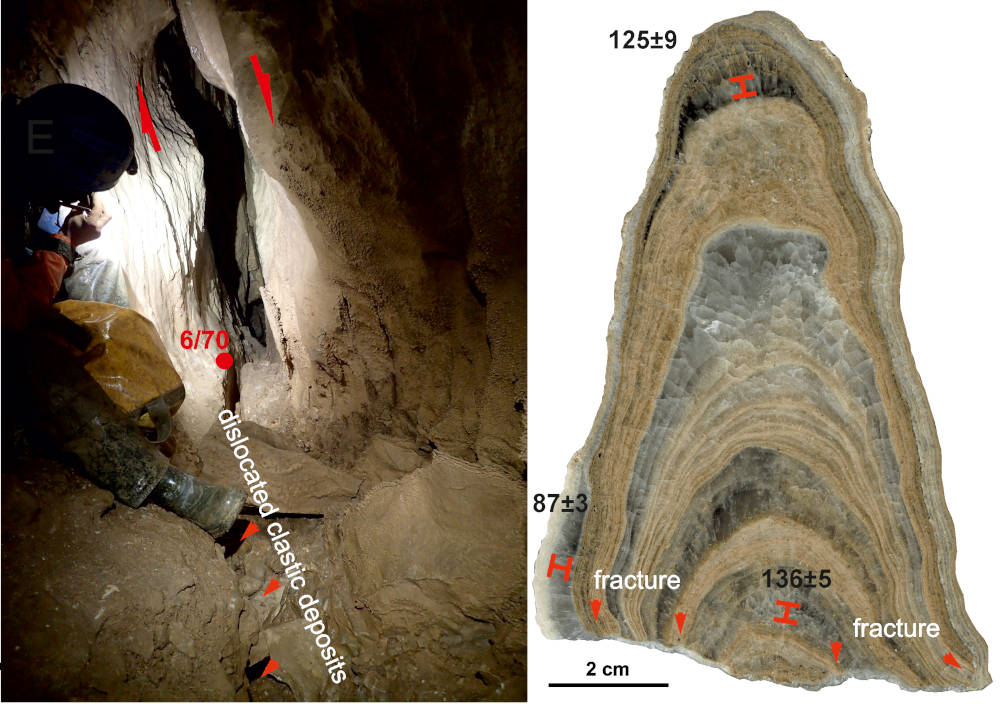The steep morphology of the highest mountains in the Carpathians, combined with clear boundaries delineated by faults, has long intrigued geologists about the potential recent tectonic activity in the Tatra Mountains. However, for decades, evidence for Quaternary tectonic activity in the Tatras was based on geological “impressions,” lacking concrete proof. It was only with the latest LIDAR technology that late Pleistocene (approx. 19,000 years ago) displacement along the sub-Tatra fault was revealed. Yet, whether this was an isolated event and what its source was remained a mystery.
An international team led by Dr. hab. Jacek Szczygieł from our Institute utilized the protected environment of caves, employing dating of damaged speleothems to extend the record of Tatra’s Quaternary deformation to 0.5 million years ago. Results from ten caves indicate five periods of intensified activity: 465-332 thousand years ago, 280-260 thousand years ago, 204.8-188.8 thousand years ago, 127-86.6 thousand years ago, and 29.5-10.11 thousand years ago. Three mechanisms of fault reactivation were identified through paleostress analysis of cave corridor displacements: (1) gravitational sliding; (2) NNE-SSW transpression, likely associated with the NNE movement of the ALCAPA tectonic microplate; and (3) SE-directed tectonic compression, which reactivated a lower-order fault. Geochronological data suggest that these three stress regimes coexisted in the middle and late Pleistocene. Although the dominant process couldn’t be conclusively identified, the authors suggest that fault reactivation resulted from the isostatic response of the Tatra block to the retreat of mountain glaciers, combined with sediment evacuation overlaying regional tectonic processes. Furthermore, modeling indicated that with such a small distance between caves and seismotectonic faults, speleothems could break due to earthquakes exceeding Mw6.5.
The article was published in the journal Tectonophysics and is the result of an NCN OPUS project: 2017/25/B/ST10/01430
Reference:
Szczygieł, J., Gradziński, M., Grasemann, B., Hercman, H., Wróblewski, W., Bella, P., Littva, J., Sala, P., 2024. Tectonics or rebound: Pleistocene fault reactivation in the highest mountains of the Carpathians. Tectonophysics 871. https://doi.org/10.1016/j.tecto.2023.230171
Note author: dr hab. Jacek Szczygieł, prof. UŚ






